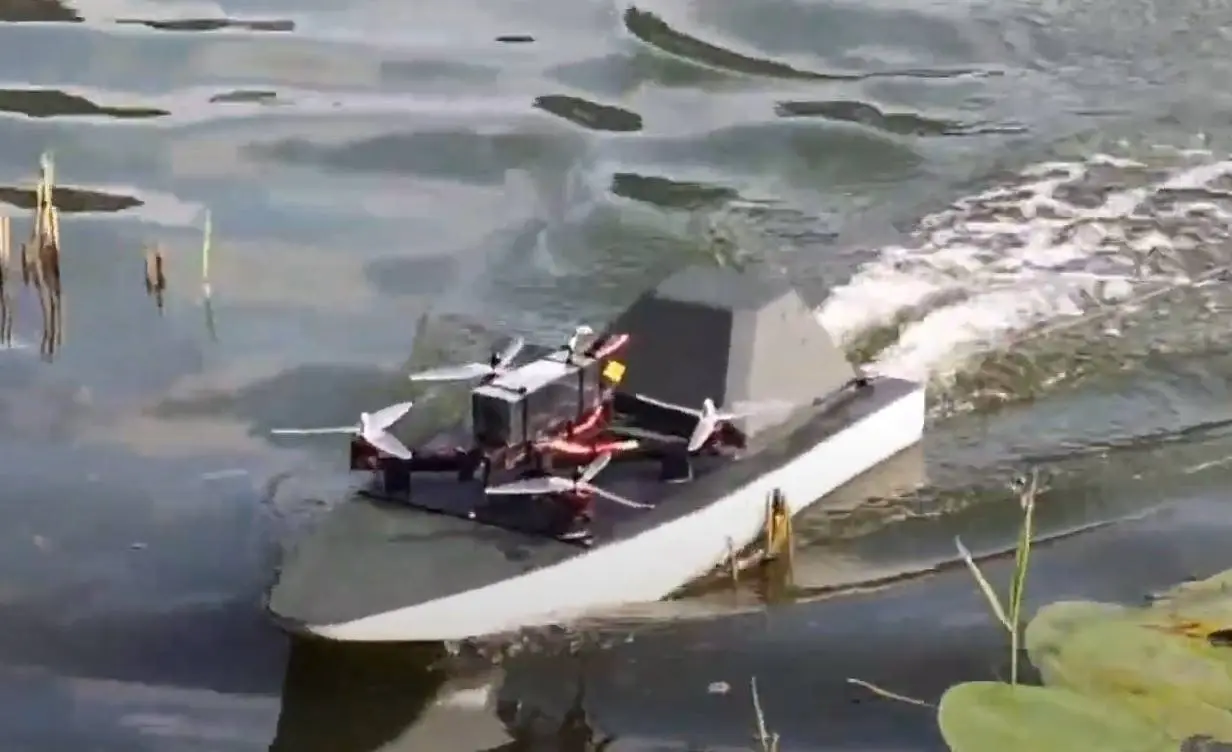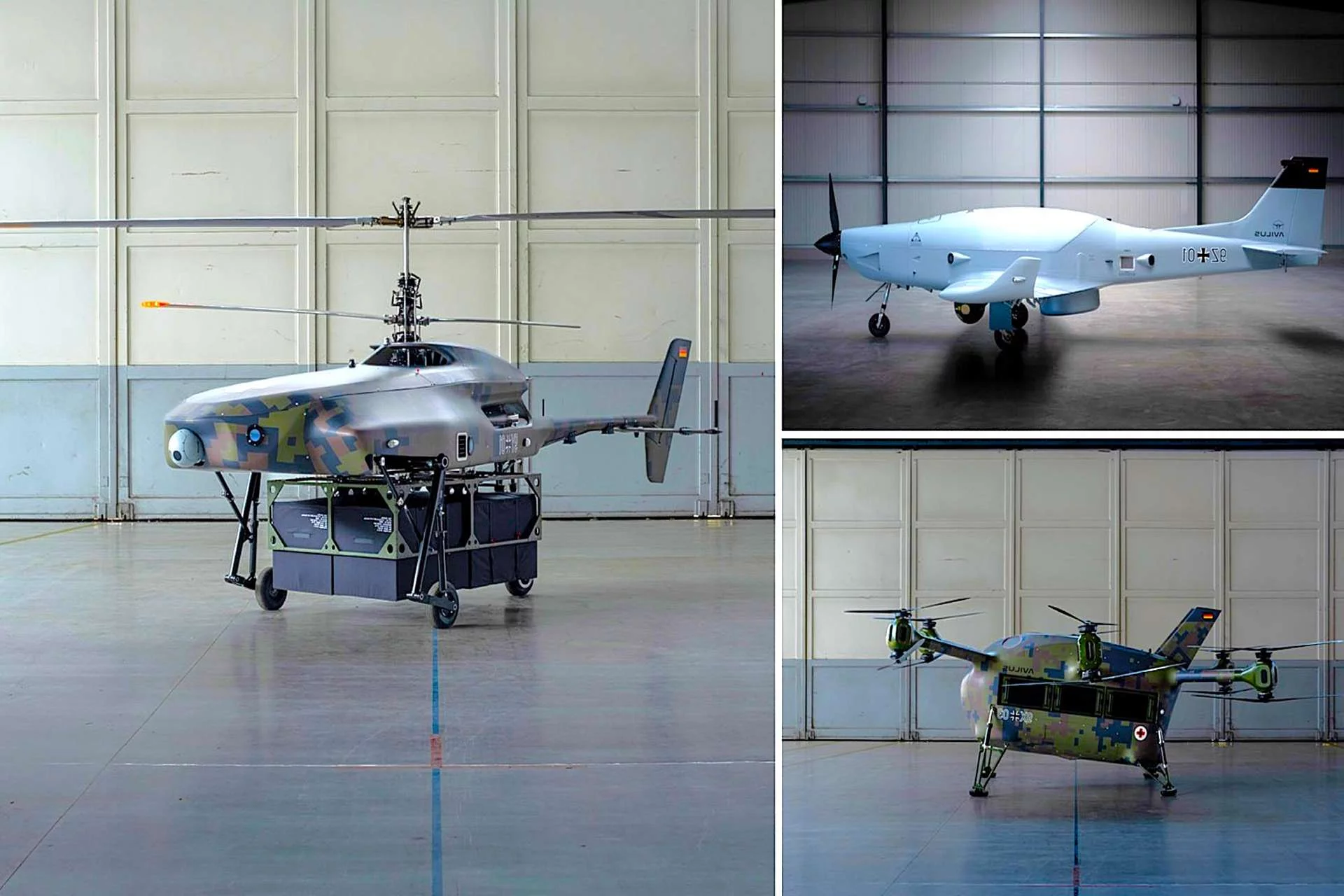
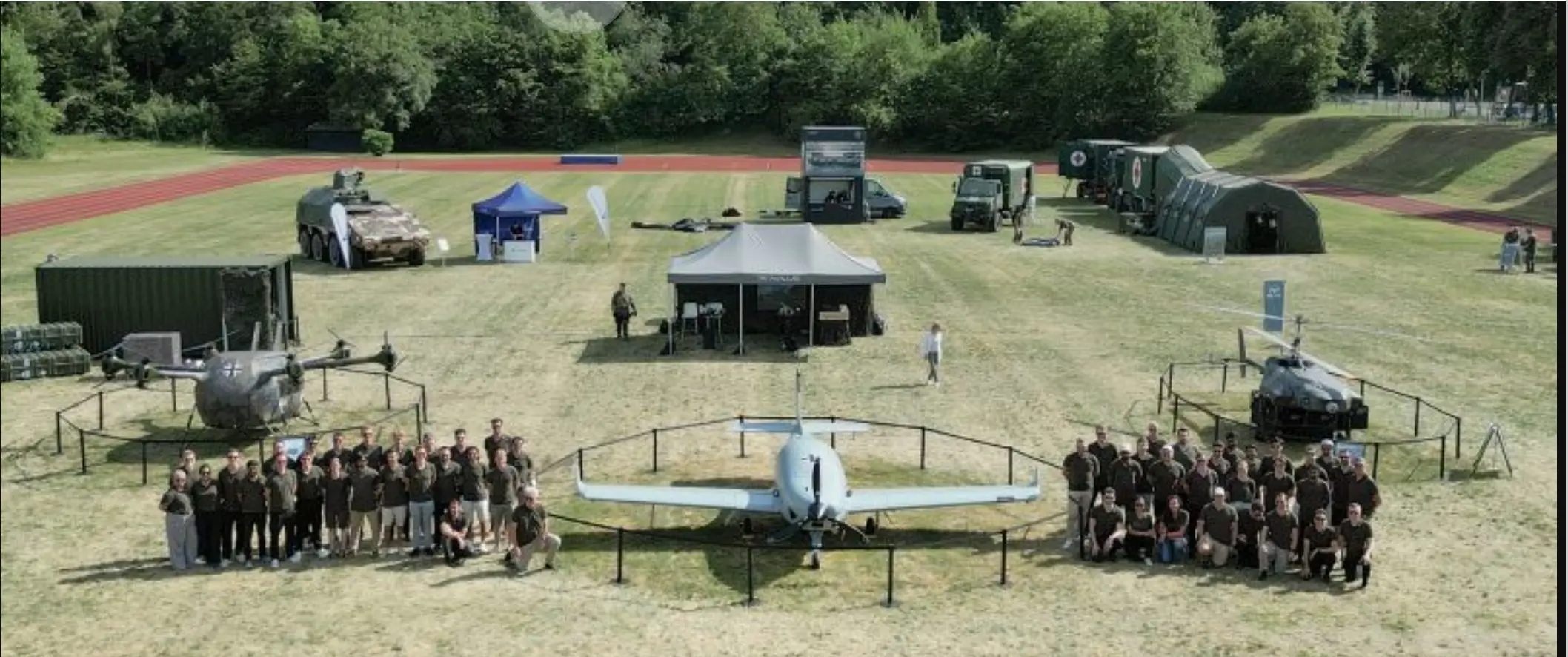
All three of these systems seem promising in particular though I think the avilus bussard is EXACTLY what Ukraine needs to deal with drone swarms/mass flying bomb attacks (i.e an electronics warfare and surveillance platform like this) see my post on the Aero Shark ultralight airplane for more info on the topic.
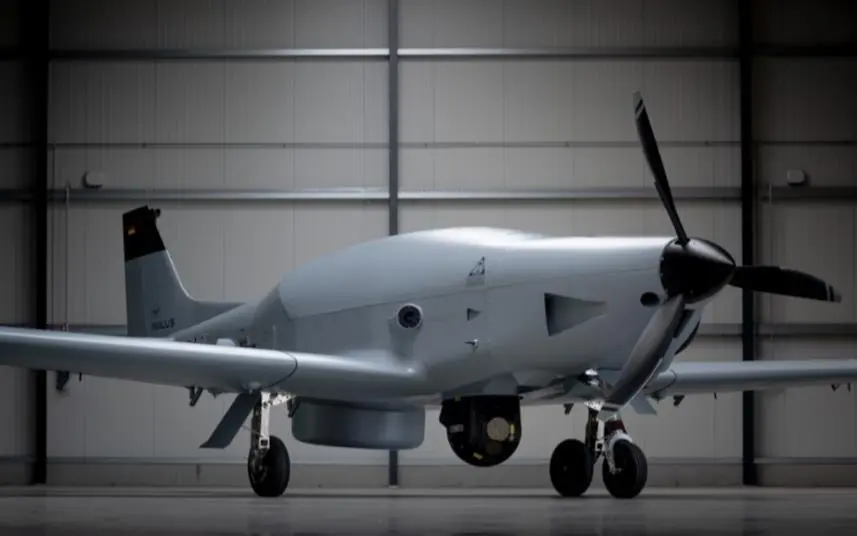
The new defense product lineup positions the Bussard drone as a long-range strategic asset capable of persistent surveillance and precision effects. With its maximum takeoff weight of 800 kg and payload capacity of 143 kg, Bussard provides wide-area reconnaissance thanks to its Hensoldt Argos EO system and PrecISR radar, ensuring day-night, all-weather intelligence collection.

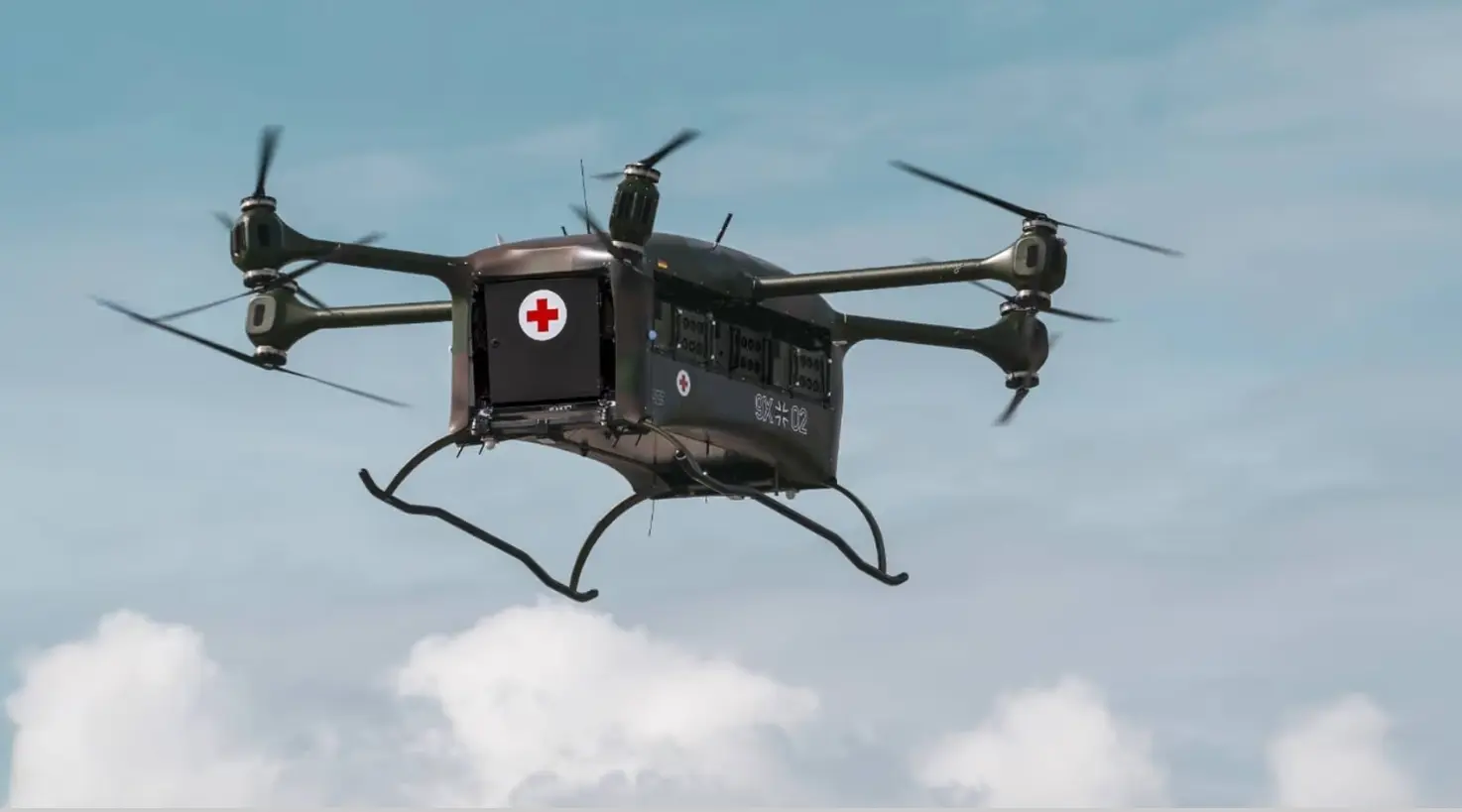
The wespe can carry a stretcher for medevac, it also provides a way to carry a soldier killed in action off of the battlefield so their loved ones can have peace without having to place a human operator at risk or require an unrealistic amount of manpower than is available at the front at that moment in time due to the Russian attacks. While this seems like a grim point, I don't care, what matters is that human beings are going to do everything possible to get fellow deceased soldiers off the battlefield so they can have a decent burial and this will inveitably place humans at risk when they do this. In those instances the impact of a wespe drone is no longer just assistance in a kind but grim epigraph, it becomes an agent to free the other human beings defending up so they can better ensure it doesn't happen again...
The wespe (and systems like it) deserve their own post for the potential life saving applications they have in Ukraine, it is not lost to me that the original use of helicopters in warfare quickly morphed from reconnaisance into medevac.
https://blog.eastmanleather.com/view-post/korea-the-first-helicopter-war
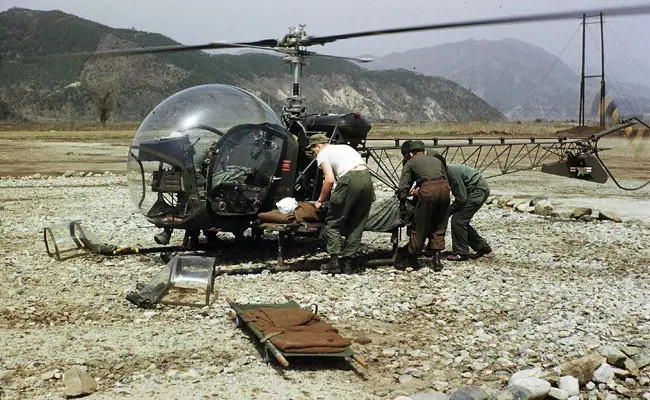

Think of these medevac drones that can lift a medical compartment/stretcher out of combat zones while under great risk as an echo of how helicopters were first used to save lives in war.
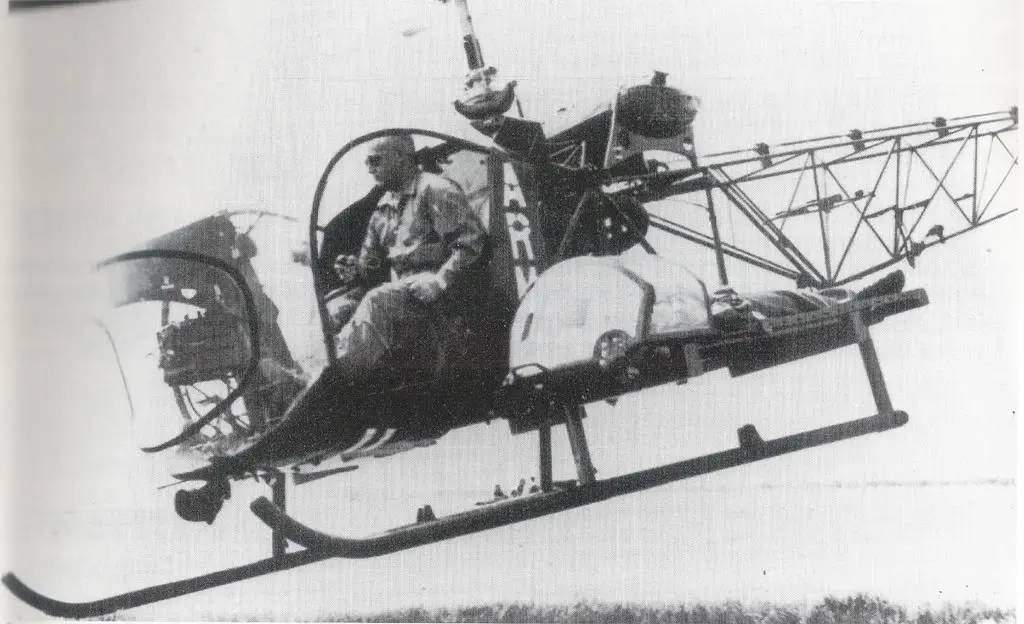
https://blog.eastmanleather.com/view-post/korea-the-first-helicopter-war
Early in 1951, Army helicopters also began to fly medevac missions, sparing seriously wounded soldiers punishing ambulance trips over Korea's wretched roads. Between their rescues of downed airmen and isolated ground troops and flying ambulance missions, U.S. helicopters were credited with saving tens of thousands of lives during the war. "Few technical innovations were equal in importance to the growing use of the helicopter for medical evacuations," one Army history declared. With the arrival of larger, more capable helicopters later in the conflict, the Marines and Army would demonstrate the usefulness of vertical lift aircraft in the tactical movement of troops and supplies — a role that would become the hallmark of another Asian war a decade later.
There is a terrible capacity in flight to kill, but even as it was being innovated at the most rapid pace empires on earth could muster, others still were moving faster by figuring out how to save lives with these incredibly flying machines.
The H-5/HO3S-1 gained its greatest fame during the Korean War when it was called upon repeatedly to rescue United Nations pilots shot down behind enemy lines and to evacuate wounded personnel from frontline areas. It was eventually replaced in most roles by the H-19 Chickasaw.[citation needed] In 1957, the last H-5 and HO3S-1 helicopters were retired from active U.S. military service.[citation needed]
https://en.m.wikipedia.org/wiki/Sikorsky_H-5
https://en.m.wikipedia.org/wiki/Sikorsky_H-34
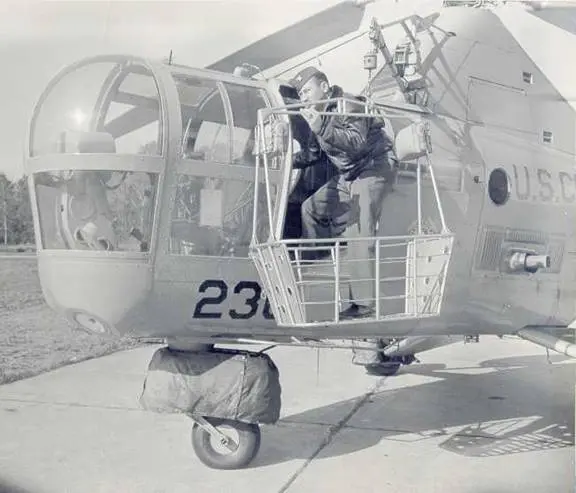
"Lieut. Stew. Graham, U.S.C.G. demonstrating the ease of leaving the rescue basket to the helicopter cabin. Rotary Wing Development Unit, Elizabeth City, N.C., 1947, rescue basket designed & perfected by personnel of the TWDU."; 1947; no photo number; photographer unknown.
https://www.history.uscg.mil/Browse-by-Topic/Assets/Air/All/Rotary-Wing/Article/3051521/sikorsky-ho2s-1ho3s-1g-dragonfly/
The H-19 Chickasaw holds the distinction of being the US Army's first true transport helicopter and, as such, played an important role in the initial formulation of Army doctrine regarding air mobility and the battlefield employment of troop-carrying helicopters. The H-19 underwent live service tests in the hands of the 6th Transportation Company, during the Korean War beginning in 1951 as an unarmed transport helicopter. Undergoing tests such as medical evacuation, tactical control and front-line cargo support, the helicopter succeeded admirably in surpassing the capabilities of the H-5 Dragonfly which had been used throughout the war by the Army.
The U.S. Air Force ordered 50 H-19A's for rescue duties in 1951. These aircraft were the primary rescue and medical evacuation helicopters for the USAF during the Korean War. The Air Force continued to use the H-19 through the 1960s, ultimately acquiring 270 of the H-19B model.
https://www.ewarbirds.org/aircraft/uh19d.shtml

https://en.m.wikipedia.org/wiki/Piasecki_H-21
https://unodigitalhumanitiesprojects.omeka.net/exhibits/show/heroes-and-hueys/helicopters-1946-1969/h-21-shawnee
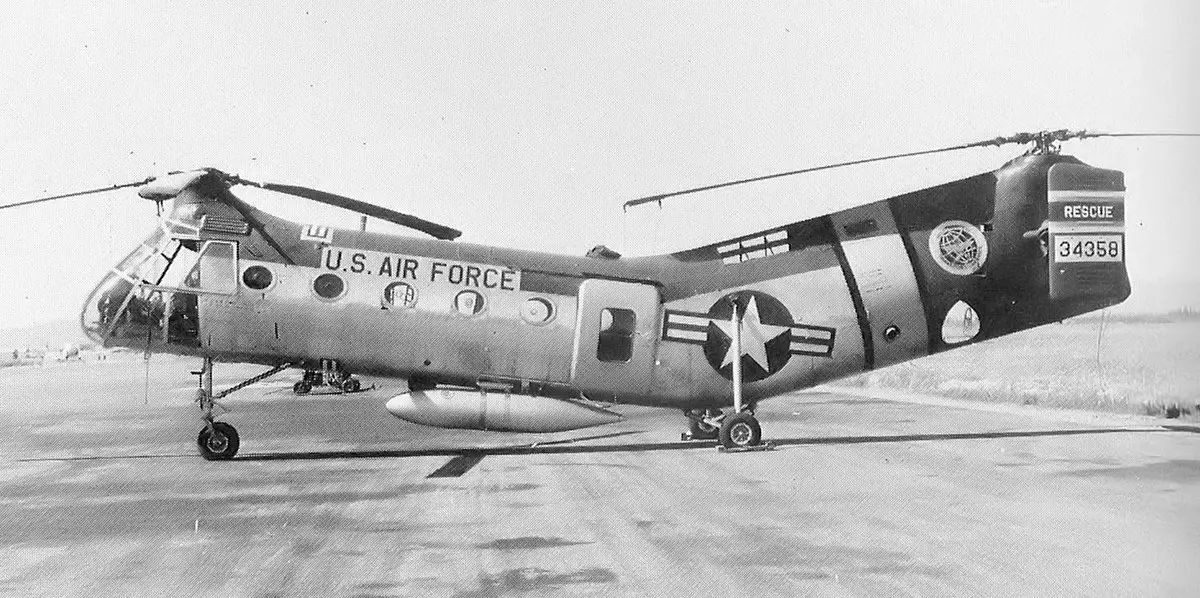
https://www.thisdayinaviation.com/tag/piasecki-yh-21-work-horse/
The U.S. Air Force immediately ordered 32 H-21A helicopters for Search and Rescue operations. The Workhorse was well suited to cold weather operations and it was widely used in Alaska, Canada, and the Antarctic. Another 163 H-21B models were ordered as a troop transport. The U.S. Army ordered a similar H-21C variant.
In 1955, Piasecki became Vertol and eventually Boeing Vertol. The company would continue to produce tandem rotor helicopters such as the H-46 Sea Knight and the CH-47 Chinook, which is still in production.
What I am trying to point out is that the military industrial complex of the world thinks we are seeing a preview of the next generation of war in Ukraine... and unfortunately we have (and unfortunately in some ways we haven't i.e. the west hasn't been very serious about arming Ukraine with what it actually needed to decisively defend itself) but looking back at the history of helicopters if you take a closer look at the bleeding... leading edge of aviation innovation you will see... it was always for live saving and rescue.
There are people who sit in austere rooms thinking about how to use aviation technology to kill people... and they will always be flanked by pilots who took the flying machine that was put in their hands and WENT without stopping to build an architecture of death and oppression.
That hasn't changed, and what is bigger than this revolution in warfare in the revolution that is happening in search and rescue aircraft and unmanned ground vehicle capacity. To bring it back to the avilus bussard, this plane is also immediately useful as a life saving search and rescue aircraft or as a surveillance aircraft for natural disaster response, the applications are wide reaching. Don't be fooled into thinking this just applies to war, it only does if our imaginations fail us and I don't see a lack of imagination in Ukraine...
https://www.defensemedianetwork.com/stories/sikorsky-h-5-combat-rescue-in-korea/












